Proprietary Grasses
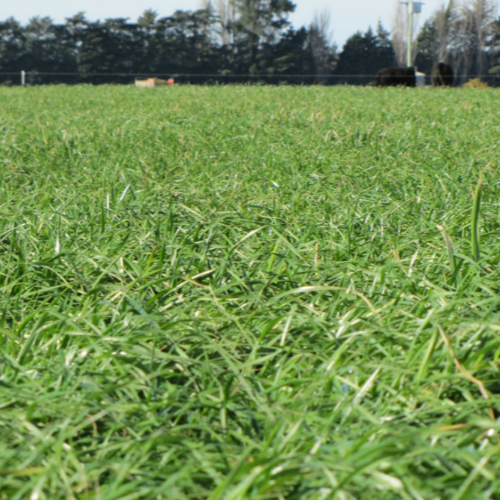
AFTERBURNER Annual Ryegrass
Afterburner Tetraploid Annual Ryegrass is specially bred to offer high-quality, short-term forage production. Known for its rapid establishment and exceptional early growth, Afterburner ensures feed availability during critical winter and early spring months, making it ideal for filling seasonal feed gaps. Its tetraploid characteristics—larger leaf area and high sugar content—provide enhanced feed quality and superior palatability, promoting improved livestock intake and productivity.
Key Benefits and Advantages
Afterburner’s rapid establishment suppresses weeds effectively and quickly delivers high yields. Its impressive winter growth ensures farmers have reliable forage during feed shortages. High digestibility, excellent palatability, and high metabolisable energy (ME) lead to improved animal growth rates, milk yields, and overall livestock performance.
Soil and Climate Suitability
Afterburner performs best in fertile, well-drained soils and adapts well to moderately heavy soils. It requires a minimum rainfall of around 500 mm annually or suitable irrigation to reach maximum potential.
Recommended Sowing and Management
Sow at 25–30 kg/ha as a pure stand or 20–25 kg/ha in pasture mixtures, ideally at a depth of 10–15 mm. Regular grazing or harvesting every three to four weeks helps maximise yields, and applying nitrogen post-grazing significantly enhances regrowth and forage production.
Compatibility with Other Species
Afterburner integrates exceptionally well into pasture mixes alongside annual legumes, such as Persian clover, Balansa clover, or vetch, and with cereals for diversified forage.
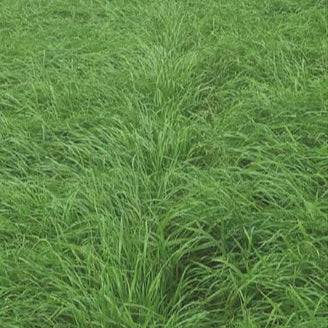
CONTEST Italian Ryegrass
Contest Diploid Italian Ryegrass is a highly productive variety selected for exceptional seasonal dry matter yields, especially in autumn, winter, and early spring. Its distinctively late-heading growth habit allows it to retain leafy, vegetative growth significantly longer, ensuring sustained forage quality through the season. Contest is ideal for intensive grazing or silage production systems due to its high protein, digestibility, and metabolisable energy.
Key Benefits and Advantages
Contest consistently delivers superior dry matter production when feed is typically scarce. Its late-heading trait extends the window for peak forage quality, providing sustained nutritional value and ensuring livestock achieve excellent performance levels.
Soil and Climate Suitability
Adaptable to diverse soil types, Contest performs optimally on fertile, moisture-retentive soils with annual rainfall exceeding 600 mm or access to irrigation.
Recommended Sowing and Management
Contest is best sown at rates of 22–28kg/ha for pure stands and 18–22 kg/ha in pasture mixtures, with an optimal sowing depth of around 10–15 mm. Regular grazing rotations every three to four weeks are recommended, avoiding overgrazing below 4 cm to promote ongoing productivity and persistence for one to two years.
Compatibility with Other Species
Contest is highly compatible with legumes, especially white clover or red clover, and forage herbs such as chicory and plantain, enhancing pasture productivity and animal nutrition.
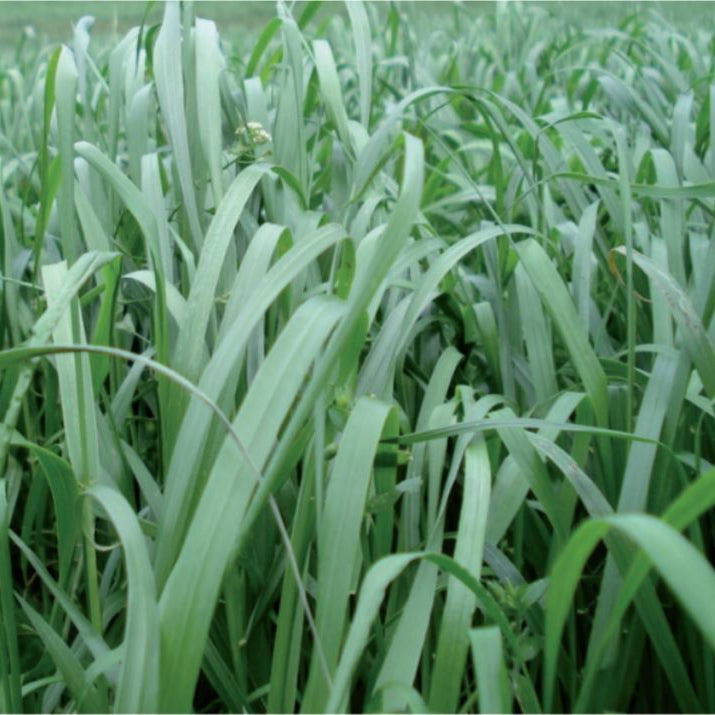
DUAL Hybrid Ryegrass
Dual Tetraploid Hybrid Ryegrass uniquely combines rapid establishment, high seasonal dry matter production, and the longevity typical of perennial ryegrass, with persistence often exceeding four years. As a nil-endophyte variety, Dual offers excellent livestock safety, significantly enhancing feed intake due to its superior palatability, digestibility, and high metabolisable energy content.
Key Benefits and Advantages
Dual consistently produces high yields, especially notable during winter when forage is most needed. Its nil-endophyte status reduces the risk of animal health concerns such as ryegrass staggers, improving livestock safety and performance. Dual's persistence makes it particularly suited for longer-term pasture strategies where maintaining productivity is critical.
Soil and Climate Suitability
Best suited to fertile soils with good moisture retention and annual rainfall above 600 mm or supplementary irrigation. It tolerates moderate waterlogging and drought periods, depending on soil quality and management.
Recommended Sowing and Management
Dual is recommended at sowing rates of 22–28 kg/ha when used alone or 18–22 kg/ha as part of mixed pastures. Optimal sowing depth is around 10–15 mm. Managed rotational grazing every three to five weeks, with post-grazing residuals no lower than 5 cm, supports excellent regrowth and persistence.
Compatibility with Other Species
Dual complements white clover, plantain, and chicory very effectively, forming highly productive, balanced pasture mixes.
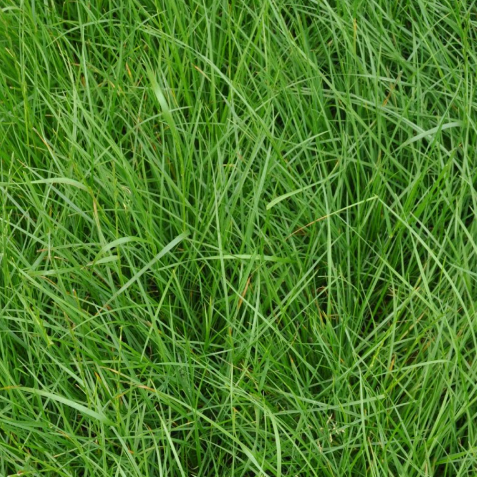
TACTIC Perennial Ryegrass
Tactic Diploid Perennial Ryegrass is a highly resilient, densely tillered variety, bred specifically to withstand intensive grazing systems. With its robust winter and early spring growth patterns, Tactic is particularly valuable for lambing or calving periods. Its low-endophyte status eliminates the risk of ryegrass staggers, promoting safer grazing.
Key Benefits and Advantages
Tactic is notably persistent, even under frequent grazing pressure. Its high dry matter production during cooler seasons ensures feed availability aligns closely with peak animal demand. High feed quality and palatability significantly boost livestock performance and growth rates.
Soil and Climate Suitability
Adaptable to fertile soils in climates receiving 600 mm or more rainfall annually or with supplementary irrigation. Tactic is particularly well-suited to temperate climates and regions with moderate seasonal variations.
Recommended Sowing and Management
Recommended sowing rates are 22–26 kg/ha in pure stands or 18–20 kg/ha within pasture mixtures, at a depth of around 10–15 mm. Grazing rotations every three to four weeks are optimal. Avoid heavy grazing below 4 cm to encourage strong regrowth and sustained productivity.
Compatibility with Other Species
Tactic is highly compatible with forage herbs like chicory and plantain, and legumes such as white clover, forming balanced pasture mixes that improve overall animal performance and pasture resilience.
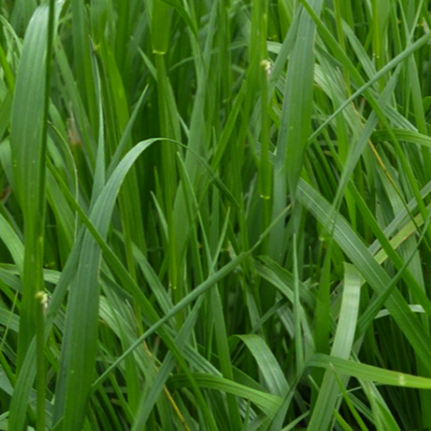
PRIMEFEST Festulolium
Primefest is an innovative hybrid forage grass combining the yield potential and rapid establishment of tetraploid Italian ryegrass with the resilience and drought tolerance of meadow fescue. This blend makes Primefest an excellent medium-term pasture option (two to three years), particularly valuable for intensive grazing, finishing livestock, and silage production systems.
Key Benefits and Advantages
Primefest delivers consistently high forage yields, particularly during winter and early spring, when feed availability is critical. Its deeper root system inherited from meadow fescue contributes to enhanced drought tolerance, enabling sustained production during drier summer months. Exceptional feed quality ensures high digestibility, palatability, and energy content, enhancing livestock performance.
Soil and Climate Suitability
Primefest performs optimally on fertile soils and adapts well to moderate moisture conditions (minimum annual rainfall of approximately 500 mm). Its deep roots make it particularly suitable for regions prone to periodic moisture stress.
Recommended Sowing and Management
Sow Primefest at 25–30 kg/ha for pure stands or 20–25 kg/ha in mixed pasture blends, ideally sown at 10–15 mm depth. Grazing should be managed rotationally every three to four weeks to maintain productivity, avoiding grazing below 5 cm. Fertiliser applications, particularly nitrogen after grazing, support growth and persistence.
Compatibility with Other Species
Primefest works exceptionally well combined with forage herbs like chicory or plantain and legumes such as white or red clovers, creating versatile and highly nutritious pasture mixes.
Other Grasses
-
Brome Grass
Brome is a drought-tolerant, perennial grass highly valued for consistent production of quality forage, particularly during early spring and autumn. Its extensive root system provides soil stability and allows reliable yields even under dry conditions. It suits well-drained soils and performs best with rainfall between 450–750 mm annually. Ideal for grazing systems where reliable seasonal production is required, it blends effectively with legumes for enhanced pasture resilience.
-
Cocksfoot
Cocksfoot is a hardy, perennial grass known for its resilience and high dry matter yields under dry or challenging soil conditions. Its deep roots provide exceptional drought tolerance, making it suitable for low-fertility soils and semi-arid regions with 450–800 mm annual rainfall. Cocksfoot is highly compatible with legumes and forage herbs, offering dependable feed quality and long-term pasture persistence under grazing.
-
Tall Fescue
Tall Fescue is a robust perennial grass notable for drought resistance, high yield, and adaptability to varied soils, including moisture-retentive and heavy clay types. With deep rooting that sustains production through dry periods, Tall Fescue provides excellent forage quality for grazing or silage. It thrives with rainfall from 500–900 mm annually and pairs exceptionally well with legumes, significantly improving pasture productivity and longevity.
-
Meadow Fescue
Meadow Fescue is a perennial forage grass prized for high palatability, nutritional value, and excellent performance in cooler, moist climates. Well-adapted to temporary waterlogging and fertile soils, it is particularly suited to regions with 600–1000 mm annual rainfall. Meadow Fescue delivers consistent, high-quality grazing or silage yields and integrates smoothly into mixed pastures with clovers and forage herbs.
-
Prairie Grass
Prairie Grass is a productive, short-lived perennial grass known for rapid establishment and vigorous winter-spring growth. Offering high-quality forage with excellent palatability and nutritional content, it suits rotational grazing and cutting systems. It thrives best in fertile, free-draining soils and reliably produces under rainfall conditions exceeding 600 mm annually, ideally mixed with legumes to optimise nutritional balance.
-
Timothy
Timothy is a cool-season perennial grass highly valued for exceptional forage quality, especially in hay and silage systems. It provides palatable, nutritious feed and is well adapted to colder, moist climates with 700–1200 mm rainfall annually. Timothy prefers fertile, moisture-retentive soils, making it a reliable choice for regions experiencing cool conditions or periodic waterlogging.
